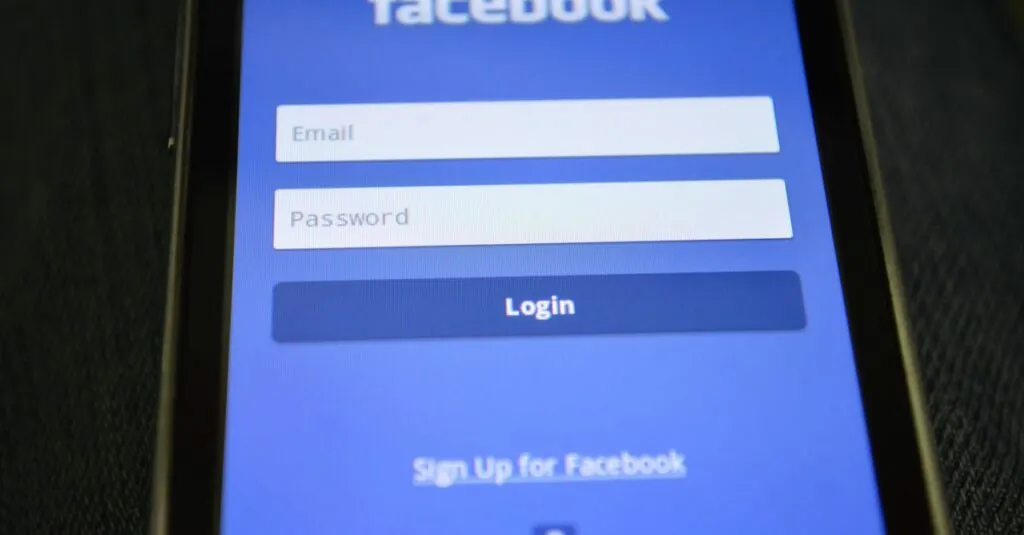Table of Contents
ToggleChanging your Outlook email password on an iPhone might sound like a techy chore, but it’s easier than finding a parking spot at a crowded mall. Whether you’ve had a security scare or just want to keep your inbox as secure as Fort Knox, updating your password is a smart move.
Imagine your email as a cozy little café where only you and your closest friends hang out. Now picture an uninvited guest trying to sneak in. Yikes! With just a few taps on your iPhone, you can kick that intruder out and ensure your personal space remains just that—personal. So, let’s dive into the simple steps that’ll have you sipping your coffee in peace, knowing your digital world is safe and sound.
Understanding Outlook Email Passwords
Managing email passwords is crucial for online security. Outlook email users should prioritize understanding their password protocols to protect personal information.
Importance of Password Security
Password security plays a vital role in safeguarding sensitive information. Strong passwords prevent unauthorized access and deter potential cyber threats. If a user’s password is weak or easily guessable, hackers may find it simple to compromise accounts. Utilizing a mix of letters, numbers, and symbols can enhance password strength. Regularly changing passwords provides an added layer of protection against possible breaches. It guarantees that even if a password falls into the wrong hands, the risk remains minimized.
When to Change Your Password
Changing passwords regularly is essential for maintaining overall account security. Users should change their passwords immediately if they suspect any suspicious activity. Additionally, updating passwords every three to six months keeps accounts secure. Any unauthorized access or sharing of passwords prompts an immediate change. When creating new accounts or after service notifications about potential security threats, updates become necessary. Keeping passwords unique for different accounts reduces vulnerability.
Steps to Change Outlook Email Password on iPhone
Changing your Outlook email password on an iPhone involves several straightforward steps. Following this guide ensures enhanced email security and protects personal information.
Accessing the Settings App
Begin by locating the Settings app on your iPhone’s home screen. Tapping the gear icon opens the settings menu. Scroll down to find it, then proceed to access your account configurations.
Navigating to Passwords & Accounts
Next, look for the option labeled “Passwords & Accounts” within the settings menu. This section consolidates accounts linked to your device. Selecting this option reveals the list of accounts already set up on your iPhone.
Selecting Your Outlook Account
After opening the “Passwords & Accounts” section, identify your Outlook account from the list. Tapping on the account name reveals specific settings related to that email. Each account includes settings for updating and managing credentials.
Updating Your Password
To update your password, find the field labeled “Password” and tap on it. Enter the new password into the provided field. Remember to save changes once you’ve entered the updated password to ensure that your account reflects the new credentials.
Troubleshooting Common Issues
Changing an Outlook email password on an iPhone may lead to some common issues. Below are solutions for specific problems users might encounter during or after the process.
Forgotten Password Problems
Forgotten passwords create significant challenges. If a user forgets their password, recovery options often include email verification or security questions. Visiting the Microsoft account recovery page allows users to reset their passwords quickly. Users should keep recovery information updated to avoid delays. Using a password manager can simplify tracking passwords over time. Strong, memorable phrases often serve as helpful reminders for future reference.
Sync Issues After Changing Password
Sync issues may arise immediately following a password change. The Outlook app may need refreshing to recognize updated credentials. Checking internet connectivity is essential; stable connections are required for proper synchronization. Users should toggle their Outlook account off and back on under “Passwords & Accounts” in the iPhone settings. If problems persist, removing and re-adding the account could resolve lingering sync issues. Regular app updates enhance compatibility and security, so keeping the Outlook app current is advisable.
Additional Security Tips
Enhancing email security involves more than just changing your password. Implementing additional measures protects personal information and reduces unauthorized access.
Enabling Two-Factor Authentication
Two-factor authentication significantly boosts account security. This feature requires a second form of verification, such as a text message alert or an authentication app code, in addition to your password. Using this method adds an extra layer of protection for your Outlook email. Enable two-factor authentication through your Microsoft account settings. This simple step can thwart many unauthorized access attempts.
Recognizing Suspicious Activity
Recognizing suspicious activity keeps your email account secure. Monitor email accounts for unfamiliar login attempts or unexpected changes in settings. If suspicious emails land in the inbox, or contacts receive unusual messages, take action immediately. Report any unusual behavior to Microsoft support for assistance. Staying vigilant minimizes risk and helps maintain the security of personal information.
Changing the Outlook email password on an iPhone is a simple yet vital step in maintaining email security. By regularly updating passwords and using strong combinations of characters users can significantly reduce the risk of unauthorized access.
Staying proactive about email security not only protects personal information but also fosters a safer online environment. Implementing additional measures like two-factor authentication further enhances protection.
By following the outlined steps and security tips users can ensure their email accounts remain secure and private. Prioritizing these practices will lead to a more confident and secure email experience.




